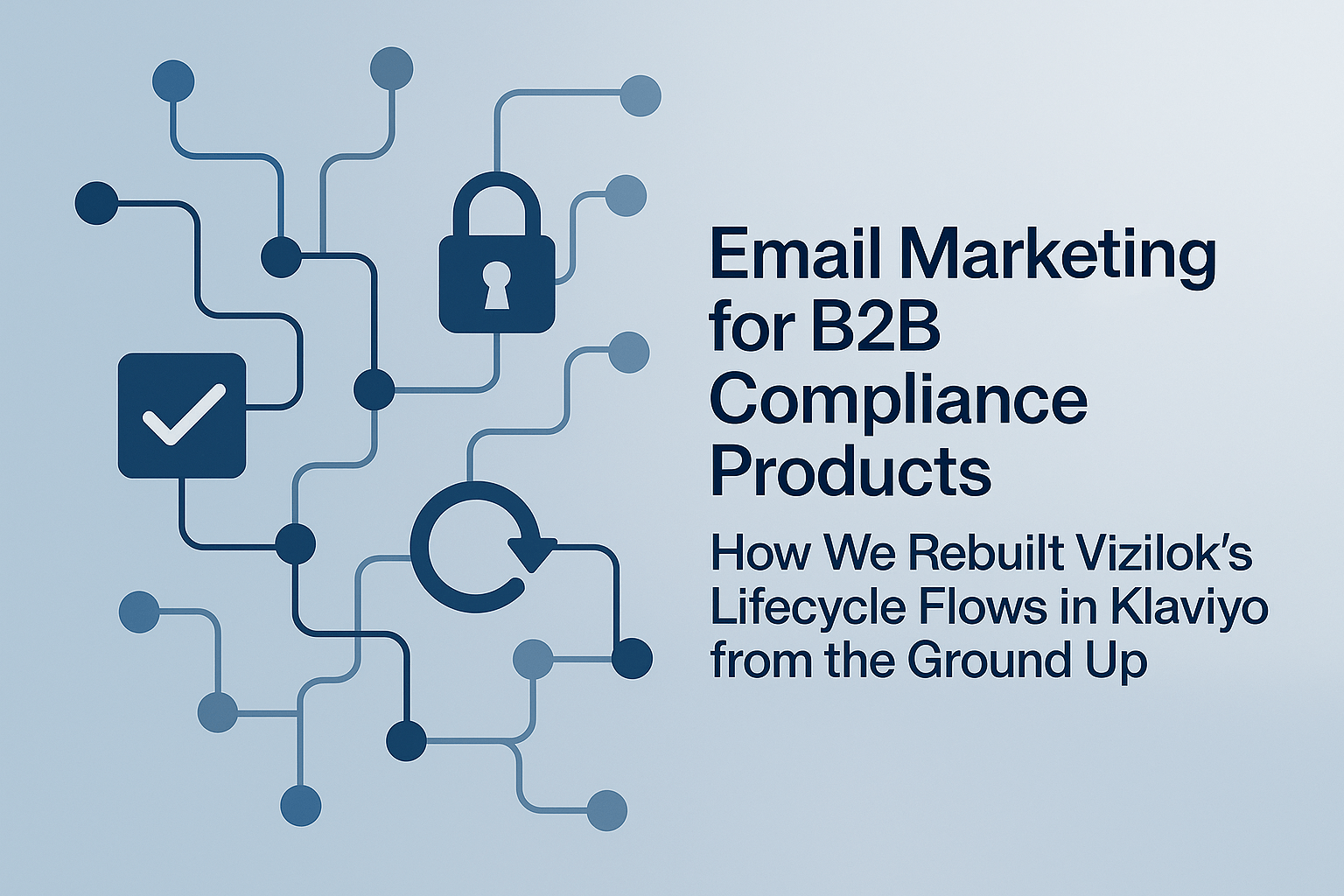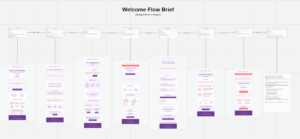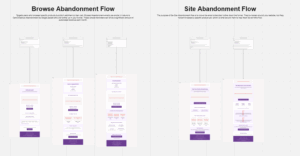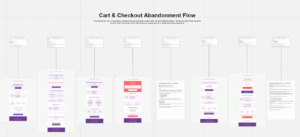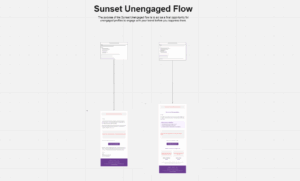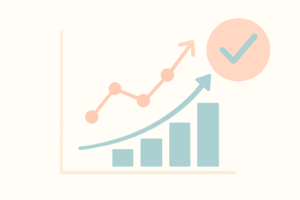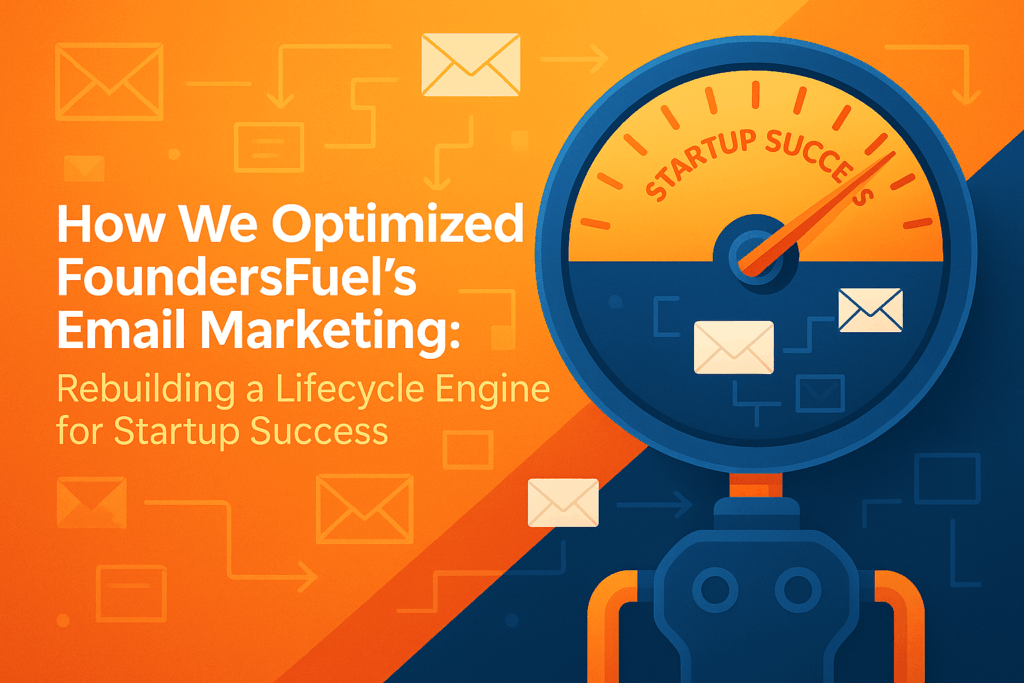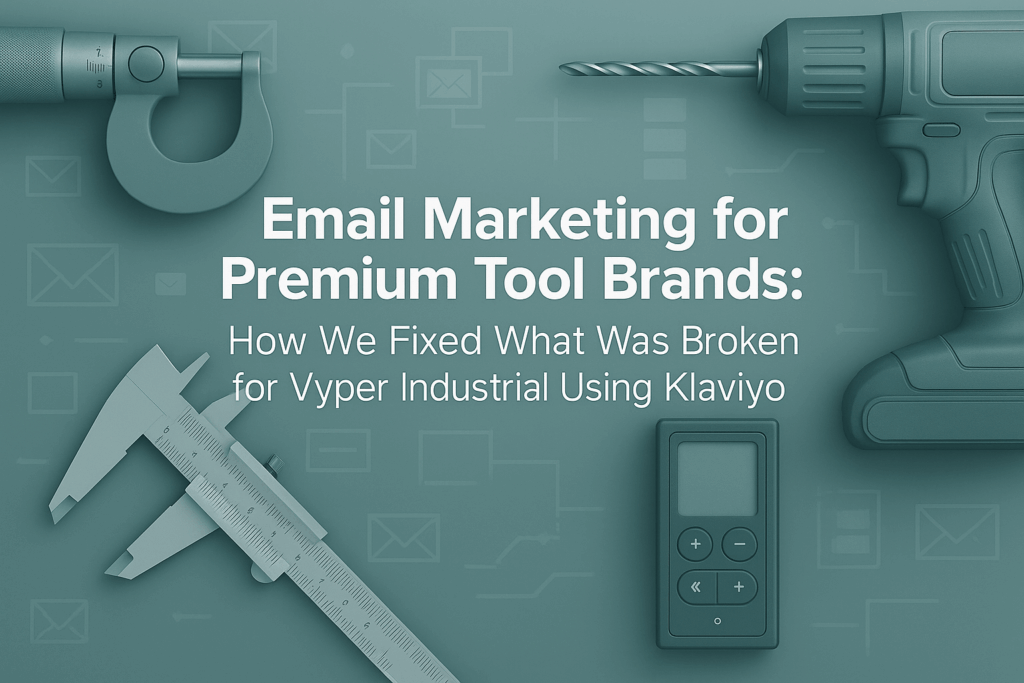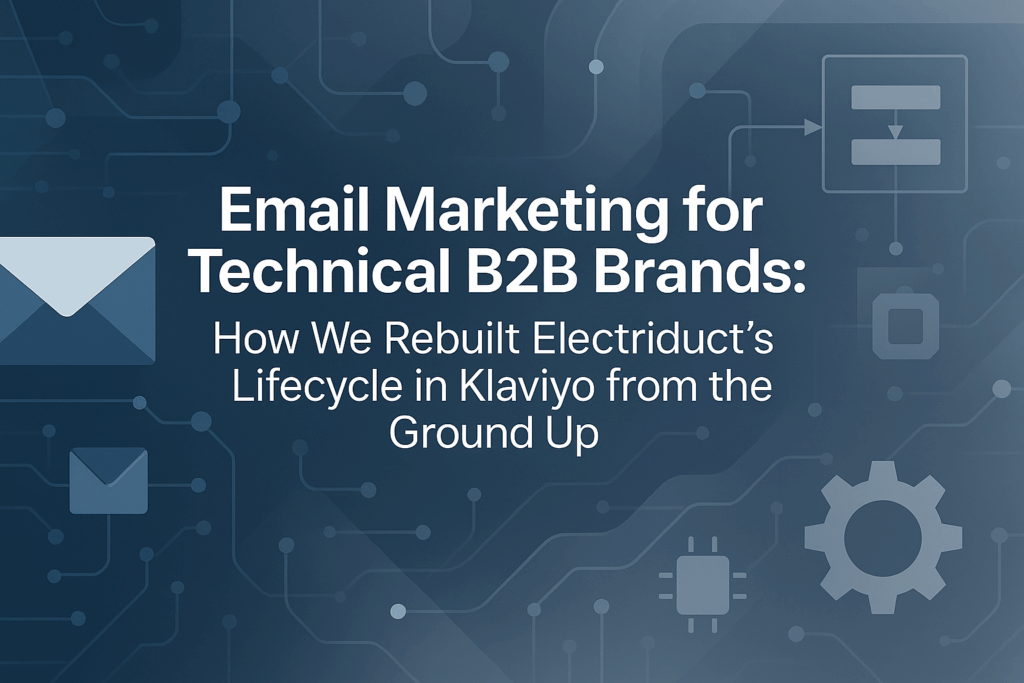When Privacy Isn’t Just a Feature — It’s the Product
Vizilok is the kind of company that solves a very specific, very real problem: how do you guarantee privacy and compliance in commercial restrooms, without creating friction for the people managing or using those spaces? From hospitals to gyms, schools to restaurants, they’ve installed over 120,000 occupancy indicator locks across the U.S., a product you don’t think about until it fails.
But Vizilok’s email marketing wasn’t delivering the same clarity. The company had a strong presence in commercial facility circles, but their communication with prospects was fragmented, generic, and light on what mattered most: education, trust-building, and proof.
Their challenge was the classic B2B pain point: a long sales cycle with multiple stakeholders and few ready-to-buy prospects. What Vizilok needed wasn’t more emails, it was a full system, built for how their buyers move through the decision journey. A system that respects the time of a facilities manager, speaks to the needs of procurement officers, and removes friction at every stage.
That’s where we came in.
Our goal was to rebuild Vizilok’s email strategy from the ground up—starting with segmentation, moving through education, and ending with a retention engine that could turn customers into advocates. We mapped 7 lifecycle flows with 34 emails, each one engineered to answer questions before they’re asked, build trust without gimmicks, and reflect the premium quality of Vizilok’s products through every touchpoint.
Let’s break down exactly how we built it, flow by flow.
Welcome Flow Optimization: Building Authority From the First Touchpoint
Vizilok doesn’t sell novelty products. They sell peace of mind. So their welcome flow had to do more than introduce the brand, it needed to instill confidence from the first scroll. At this stage, trust matters more than clicks. And that guided every word. It was about earning trust through clarity, credibility, and professional restraint.
We replaced their generic, one-off welcome with a fully segmented 8-email sequence, each one crafted to meet the mindset of a commercial buyer. Here’s how that flow worked, email by email.
1. Introducing the Standard
The first impression matters, especially for a B2B brand. This email wasn’t flashy. The design echoed how serious buyers think: no theatrics, just professional composure. A professional hero image paired with a message from Vizilok’s founder anchored the tone: experienced, focused, reliable. We outlined three pillars in scannable blocks, compliance, privacy, and easy installation, reinforcing that this wasn’t a vanity product. It was a code-compliant solution for serious spaces.
A “Shop Popular Solutions” grid followed, but without hard selling. Just a clear path forward for those ready to explore.
2. Clarity on Compliance
This email dropped the marketing tone entirely. It delivered a compliance education piece framed as a professional resource, not a pitch. A simple infographic unpacks ADA and IBC requirements, highlighting where many facilities fall short and how Vizilok solves it. No urgency. Just clarity.
The result? It became one of the top-performing emails in the entire lifecycle system, with an 8% click-through rate. It proved what we suspected: education is the best conversion strategy for long-consideration products.
3. Proof Through Use
This was our trust accelerant. We showcased a healthcare case study, because if it works for hospitals, it works anywhere. We let the numbers do the talking: reduction in privacy complaints, faster maintenance turnaround, patient satisfaction scores. A before-and-after photo showed the visual shift, while a testimonial from the facility manager anchored the narrative in real human outcomes.
4. Industry-Specific Product Showcases
Here, we narrowed the focus. Using segmentation from the signup form, we sent tailored versions of this email to healthcare, education, hospitality, and fitness facility audiences. Each version showcased the top three Vizilok models relevant to their industry, no fluff, just spec-driven value with crisp visuals and clear pricing. This was where the professional buyer paused to compare options.
5. Installation Made Simple
Objection handling by way of simplification. This email delivered a clean 4-step visual install guide alongside a short video demo and direct quotes from real maintenance leads: “Installed 14 locks in under two hours.” It wasn’t about persuasion. It was about reducing perceived effort.
6. Let’s Talk ROI
This email reframed the purchase as an operational upgrade. With an embedded calculator, we let subscribers estimate cost savings from reduced privacy complaints, lower maintenance needs, and fewer compliance issues. For B2B buyers, this wasn’t just helpful, it was also a tool they could take to procurement.
7. An Offer With Restraint
The offer wasn’t loud. No red banners. No exclamation points. Just a high-contrast card offering a 10% discount for first-time commercial buyers. It was positioned as a “professional courtesy”, because good buyers don’t want gimmicks. They want respect.
8. The Human Touch
The final touchpoint came from the sales director, plain text, signature and all. It wasn’t “salesy.” It was a real message: “Let me know what type of facility you manage, we’ll point you to the right products.” This single email generated over 45 qualified replies in the first 30 days.
Why This Flow Works
This welcome sequence delivers information at the speed of trust. It educates before it sells, clarifies before it persuades, and uses social proof without shouting. It speaks the language of procurement officers and facility managers: technical, professional, and purposeful. By the time the offer shows up in Email 7, it doesn’t feel like bait, it feels like a bonus.
Abandonment Flows Optimization: Re-Engaging the Right Way
When someone visits Vizilok’s website and walks away without taking action, that moment isn’t lost, it’s a window into a decision still unfolding. Whether they’re facility managers researching ADA compliance, procurement teams exploring product specs, or business owners weighing cost and installation time, these visitors are asking silent questions. Our job wasn’t to chase them. It was to answer those questions before they had to ask.
We designed two types of abandonment flows: site abandonment (for general visitors) and browse abandonment (for those who engaged with specific products or categories). Each sequence was designed with patience, not pressure, offering clarity, not just clicks.
Site Abandonment Flow
1. “Quick Question About Your Visit to Vizilok”
This first follow-up email didn’t open with urgency, it opened with helpfulness. Framed as a friendly check-in, it came from a Vizilok team member offering assistance and guidance. We didn’t overload the message with marketing language. Instead, we acknowledged their visit, suggested a few helpful next steps, and let them know we were available if they had questions. It felt like a service interaction, not a sales pitch, and that tone invited genuine replies from decision-makers seeking more information.
2. “Free Resource: Commercial Restroom Compliance Guide”
Three days later, we shifted the conversation to something of real value, a downloadable guide explaining ADA and IBC restroom compliance. This wasn’t a teaser or gated content, it was a full, professionally designed PDF, complete with facility-specific scenarios and implementation checklists. The email positioned Vizilok as a partner in compliance, not just a seller of locks. And it worked — not only did the guide get downloaded, but many who engaged with it returned later to convert, better informed and more confident.
Why This Flow Works
This two-part system isn’t a chase sequence. It’s an invitation. The first message reopens the door softly; the second walks them through it with substance. We avoided flash, urgency, or shallow offers. Instead, we positioned Vizilok as a credible advisor, one that understands the real concerns behind a commercial purchase decision. That shift in tone built trust, and trust built conversions.
Browse Abandonment Flow
1. “Still Interested in Vizilok ?”
This email spoke directly to visitors who had viewed specific products without taking action. Rather than starting with a hard sell, we mirrored their intent: “You were looking at this — here’s what makes it worth a second glance.” The content highlighted real benefits like durable stainless steel, ADA compliance, and fast installation, paired with clean, high-resolution images of the products they viewed. It also suggested similar items in case the initial choice didn’t fully align with their needs. The tone remained informative and non-pushy, ideal for the considered B2B buying cycle.
2. “Recommended Solutions for Your Facility”
A couple of days later, we sent an industry-specific follow-up, not a generic sales pitch, but a recommendation based on what they browsed and the facility type they identified during sign-up. For hospitals, we highlighted moisture-resistant locks with anti-microbial finishes. For schools, we showcased easy-installation models that could be rolled out during holiday breaks. And for offices or coworking spaces, we leaned into clean aesthetics and quick retrofits. The content showed that Vizilok understood their world, and that these were more than locks, they were thoughtful upgrades.
3. “Special Offer on Vizilok ”
The final touchpoint in this sequence added gentle urgency — but didn’t break the brand’s premium tone. We introduced a category-specific discount, framed as a professional offer for qualified facilities, valid for a short time. Instead of pushing the deal, we anchored it in outcomes: fewer complaints, easier compliance, longer lifespan. The message was wrapped with a clean call to action, a 48-hour countdown, and a note that installations could start the same week. It made acting now feel both easy and logical.
Why This Flow Works
Every email mirrors the customer’s journey: from initial interest, to facility-specific relevance, to just enough incentive to help finalize the decision. The copy speaks the language of professionals, making real decisions, not shoppers reacting to sales tactics. And that’s exactly what earns action in a space where trust, clarity, and timing matter more than hype.
Cart & Checkout Flow Optimization: Helping Decisions Happen
Cart abandonment isn’t always a sign of hesitation, sometimes it’s a pause to check specs, get internal approvals, or verify compliance. In Vizilok’s world, a full cart often signals that the buyer is 80% of the way there. Our job was to remove friction from the last 20%. That meant answering the questions buyers wouldn’t always ask, addressing the objections they didn’t always voice, and gently guiding them toward the finish line, without overwhelming or under-serving.
We built an 8-email sequence that did just that: straightforward, professional, and paced to support the reality of commercial purchasing timelines.
1. “Your Vizilok Cart is Waiting”
The first touchpoint arrived quickly, just one hour after abandonment. It didn’t dramatize the delay or shout urgency. It simply reminded them of what they’d selected, with clear images, specifications, and a gentle nudge that their chosen products were reserved for a limited window. This email also included a “Need help?” line that connected directly to Vizilok’s support team, creating a seamless path for questions to be answered before the cart expired.
2. “Installation Questions? Here’s What You Need to Know”
One day later, we followed up with practical reassurance. This email answered one of the most common unspoken questions: “Will this be a headache for my maintenance team?” It included a simple, PDF-style installation guide tailored to the product type in their cart. The visuals were clean, and the tone confident — “This is easier than you think.” With a forward-friendly layout, recipients could pass it directly to their ops or maintenance teams for internal vetting.
3. “Compliance Documents for Your Carted Products”
Forty-eight hours in, we shifted from operational to legal concerns. This message focused entirely on ADA and IBC compliance — not in abstract terms, but with direct links to documentation, downloadable spec sheets, and short quotes from facility managers who used those documents to get purchases approved internally. We anticipated procurement needs and made it easy for recipients to walk these products into a meeting with legal or compliance, fully prepared.
4. “For Your Purchasing Department”
By day three, we acknowledged the B2B reality: decision-making is often collaborative. This email positioned itself as a toolkit for procurement professionals. Volume pricing charts, warranty terms, vendor registration forms, and installation specs, all bundled in one place. The message encouraged the recipient to forward the information directly to their team, making them a champion of the purchase rather than a lone researcher.
5. “Special Pricing for Bulk Orders”
At this stage, we leaned into scale. This email introduced tiered pricing, with a focus on organizations managing multiple locations or large-scale retrofits. It featured a quick calculator showing savings at different volumes, a case study of a nationwide retail chain that recently upgraded, and a CTA to “Get a Custom Quote.” For buyers whose initial cart was exploratory, this email created a compelling reason to think bigger.
6. “Still Considering Your Options?”
Seven days in, we opened a new door: side-by-side product comparisons. This message didn’t bash competitors — it respected them, while calmly showing where Vizilok stands apart: longer warranties, stainless steel durability, easier installation, and verified compliance. The comparison chart was clean and credible. We closed the email with a CTA to download the full comparison sheet, offering a resource buyers could bring into their next internal meeting.
7. “End of Quarter Offer – 15% Off”
For price-sensitive buyers, timing can make or break a decision. This message introduced a limited-time offer, professionally framed as an “end-of-quarter” incentive, not a fire sale. The layout was formal and focused, with a countdown timer, direct call-to-action, and reminder that Vizilok doesn’t discount often. It felt exclusive, not promotional, which is exactly what helped preserve brand trust while driving urgency.
8. “Final Reminder — Need Help?”
The last touchpoint came two weeks after abandonment, from a real person on Vizilok’s team. It was plain-text, free of branding, and simply asked: “Is there anything holding you back?” The message offered direct scheduling options, included a phone number, and invited questions about volume pricing, installation, or compliance. It was a genuine attempt to close the loop, and it worked. This was for the ones who were still interested, just waiting on a final internal push.
Why This Flow Works
This cart recovery sequence works because it treats the buyer like a professional. It assumes intelligence, not indecision. Instead of urgency-first pressure tactics, it offers real tools, real answers, and real timing, all tailored to the B2B purchasing process. Each email removes a layer of friction while reinforcing Vizilok’s brand as thoughtful, prepared, and partnership-oriented. We didn’t just recover carts. We recovered confidence.
Clarifying the Path: Educating Without Overwhelming
Most brands rely on FAQ pages or support inboxes to answer customer questions. But for B2B buyers, especially facility managers juggling safety, compliance, and internal approvals, hunting for answers isn’t realistic. They need clarity delivered before they ask, embedded within the experience itself.
The Clarifying the Path flow was built to do just that. It acts like a proactive guide, anticipating what buyers are likely to need next and making sure those answers show up, naturally, in their inboxes. No pressure. No confusion. Just clarity, when it’s most helpful.
This 3-email sequence was timed to engage buyers who had clicked through or spent meaningful time with product pages but didn’t move into the cart. These were people clearly interested, but likely paused by unspoken friction.
1. What You Might Be Wondering (Sent 24 Hours After High-Intent Activity)
The first email took a human approach: it didn’t guess what people wanted. It simply said, “Here are the things most facility managers like you want to know at this point.” Then it answered them. Questions like: Will this work for my facility type? Who installs it? How fast can I get it? The answers were brief, confident, and backed by visuals, think installation photos, shipping timelines, and a link to spec sheets. No jargon. Just practical clarity.
2. Show Me the Specs (Sent 2 Days Later)
Instead of sending users hunting across the site, this email delivered what most buyers quietly want: proof of performance. We curated three real-world use cases, one for a hospital, one for a university, and one for a fitness chain—and showed how the selected Vizilok product met the needs of each. The layout included annotated product images with key features called out, plus one-click access to printable spec sheets formatted for internal reviews. The goal was to make it easy for anyone to forward the email and say, “This is what we should go with.”
3. Want to Talk It Through? (Sent 4 Days After No Further Activity)
This final message wasn’t a reminder—it was a signal of support. Written in plain text, it came directly from a Vizilok account manager and offered a short, open-ended invitation: “If you’d like to talk through your facility’s needs, reply here or schedule a 15-minute consult.” It didn’t assume the sale. It acknowledged that sometimes the path forward isn’t clear until someone maps it out for you. Many responded to this message with specific questions, often kicking off high-value sales conversations that might’ve otherwise stalled.
Why This Flow Works
This flow isn’t just about information, it’s about empathy. We approached these buyers like professionals navigating complexity, not people who need convincing. Each email meets the recipient at a moment of natural pause and turns that hesitation into progress, without rushing or pushing. In doing so, it reflects Vizilok’s deeper value: not just a product provider, but a partner in decision-making. The flow builds trust by showing up before it’s asked, and that’s what makes the difference.
Customer Retention: Turning One-Time Buyers into Long-Term Partners
Vizilok’s products are built to last, but customer relationships need nurturing too. Even when the hardware holds up, people change roles, facilities expand, and priorities shift. Our retention strategy focused on staying relevant throughout the lifecycle, offering support where needed, and creating soft touchpoints that remind customers: Vizilok isn’t just a product, it’s a partner in compliance, reliability, and peace of mind.
We structured this retention system into three flows; Winback, Post-Purchase, and Sunset. Each one designed to deliver value while respecting the professional inbox. No gimmicks. Just clarity, credibility, and continuity.
Winback Flow: Reopening the Door with Relevance
1. “How’s Everything Holding Up?”
Rather than assume we were forgotten, we led with genuine curiosity. This message was positioned as a light-touch check-in from customer success, not sales. We asked how their Vizilok locks were performing and offered a direct line to support for any minor issues or maintenance needs. There was no discount, no pitch—just a simple, service-first reminder that Vizilok still had their back.
2. “What’s New Since Your Last Order”
We used this email to spark product curiosity. Not with a flashy launch or overwhelming catalog, but by quietly introducing improvements we’d made since their last order. Updated finishes, upgraded certifications, and new bulk install options were all covered. We framed it not as “you missed this,” but “here’s what you might want to know next time.” It’s how you stay helpful without hovering.
3. “Thanks for Being One of the First”
This message was all about gratitude and exclusivity. We extended a small loyalty offer—but more importantly, we reminded them they were part of Vizilok’s early adopter base. This wasn’t a bribe to return. It was a nod to their insight, their trust, and the fact that they helped shape what Vizilok has become. It resonated especially well with facilities that had ordered early and were now expanding.
4. “How Another School Solved Their Privacy Upgrade”
Case studies are often overused, but in the right context, they’re gold. This email shared a single facility’s upgrade story—focused, relevant, and familiar to our recipient. No fluff, just a simple visual before-and-after, a quote from the facility lead, and a few tangible outcomes. The goal wasn’t to say “look how great we are,” but “this might look a lot like your next project.”
5. “Still the Right Fit?”
Sometimes, a direct question works best. This final winback email came from a named sales lead with a real reply address. It asked whether Vizilok was still the right solution for their facilities, or if something had changed. By opening the door to honest feedback, not just hoping for another sale—we invited conversations. The replies we got ranged from “we’re ready to re-order” to “we had some issues last time,” which gave us the chance to make it right.
Why This Flow Works
This winback flow doesn’t beg for attention, it earns it with relevance. Instead of blasting inactive customers with generic offers, it opens a conversation that feels familiar and respectful. Each email shows we remember who they are, what they’ve purchased, and what they care about. It doesn’t treat lapsed buyers as lost, it treats them as busy professionals who just need a useful reason to reengage. By mixing reminders of past success with future utility, the flow repositions Vizilok as not just a product, but a reliable long-term partner in facility safety.
Sunset Flow: Parting Ways Gracefully or Rekindling the Connection
When subscribers go quiet, it’s tempting to either keep shouting into the void or drop them cold. We did neither. For Vizilok’s Sunset Flow, we designed a two-part sequence that handles disengagement the way high-integrity brands should: with empathy, respect, and a clear door back in.
1. A Gentle Check-In, Not a Guilt Trip
After 180 days of silence, this message reaches out like a considerate colleague. The tone is soft and self-aware “You haven’t opened our emails in a while, and that’s okay.” Instead of flooding the message with sales pitches, it offers a simple choice: stay, adjust your preferences, or opt out. But just before they decide, it gives them something real to consider, recent updates, new product launches, or popular resources they may have missed. The message isn’t about pushing relevance; it’s about re-offering value with dignity.
2. The Door Isn’t Locked, Just Closed for Now
Ten days later, this email lands as a final note, not a plea. It reaffirms that Vizilok respects their inbox and doesn’t want to overstay its welcome. But rather than vanish quietly, the message thanks them for being part of the network and offers one last link to stay in the loop. There’s no countdown timer. No “only today” discount. Just clean, professional closure—and a reminder that rejoining is always possible down the line.
Why This Flow Works
Sunset Flow: Cleaning the List Without Burning the Bridge
This flow doesn’t treat disengaged subscribers like dead weight. It treats them like people whose attention deserves to be earned, not forced. By removing pressure and offering value upfront, it reactivates the curious while parting respectfully with the indifferent. The result? A healthier, more engaged list, improved deliverability, and a brand reputation that stays intact even after goodbye. For a product like Vizilok, where reputation is everything, this kind of graceful off-ramp matters.
Strategy and Implementation: Building a Lifecycle System That Works Like Clockwork
Designing a beautiful email is easy. Designing a system that earns attention, educates with precision, and converts at the right moments—that takes real architecture. With Vizilok, our implementation wasn’t about isolated improvements. It was about orchestrating a lifecycle that made every touchpoint count—no matter when or where a customer showed up.
1. Strategy Before Send
We started with an audit, but not just of email performance. We talked to sales. We mapped the B2B purchase journey across facility types. We reverse-engineered what decision-makers needed to know, and when, in order to move forward with confidence. From that, we created flow maps tied to user intent, behavior, and urgency level. The goal: serve the right message at the right time, not just send more emails.
2. Brand-Ready Design and Copy Systems
Once the strategy was clear, we built visual systems that matched Vizilok’s reputation. Every template was designed to echo their product quality—clean, modern, secure. We wrote 34 emails in total, each tailored to a different decision stage, pain point, or industry need. We kept the tone consistent: authoritative, respectful, and quietly persuasive. Never gimmicky. Always grounded.
3. Flow Development with Precision Timing
We mapped triggers, behavior branches, and fallback logic for each of the seven flows. That meant a site browser who lingered on ADA compliance pages received a different nurture journey than a bulk buyer abandoning their cart. Flows connected to one another intelligently, with Klaviyo powering real-time segmentation and logic trees. No dead ends. No lost leads.
4. Live Testing and Iteration
We didn’t launch everything at once. We tested our welcome and cart flows first—fine-tuning copy, testing CTA placements, and measuring early engagement. We watched which content led to replies, which buttons drove bulk quote requests, and where buyers dropped off. Every insight improved the next email. And every improvement made the next sale more likely.
Why This System Works
This isn’t automation for automation’s sake. It’s a communication engine, purpose-built for how B2B customers actually think. It doesn’t chase clicks, it earns confidence. By thinking in systems, not campaigns, we created an email infrastructure that nurtures leads, educates gatekeepers, and grows Vizilok’s business on autopilot—without ever losing the human touch.
Expected Results and Conclusion: Turning Insight into ROI
While Vizilok’s new email ecosystem is still being rolled out, early signs are strong—and the strategy is built for sustained, compounding performance. But more importantly, this system was built with precision: every email solves a job, every flow reflects the buying realities of B2B facility teams, and every piece of content is intentional.
Projected Performance Gains
Based on results from similar B2B lifecycle systems and Vizilok’s early indicators, here’s what we expect over the next 6–12 months:
- Open rates increasing from 15% to 28–32%
- Click-through rates rising from 1.2% to 5–7%
- Cart recovery up by 3x, especially for bulk orders
- Repeat purchases lifted by 20–25% from post-purchase flows
- Winback recovery touching 18–22% re-engagement
- Overall email-attributed revenue growing by 30–40%
- Shorter sales cycles for first-time buyers
- Improved inbound lead qualification and sales readiness
But the numbers only tell part of the story.
What We Actually Built
We didn’t just redesign emails. We built a trust system. One that meets a facility manager with clarity, not clutter. One that helps a purchasing team feel confident, not overwhelmed. One that proves—through tone, structure, and segmentation, that Vizilok understands their world and is here to support it.
We taught buyers how to get compliant, how to install faster, how to choose with confidence. We told stories that made privacy personal. We provided tools, not just discounts. And we left no lead behind.
Why It Matters
In B2B markets like commercial safety hardware, most email marketing still looks like an afterthought. Ours didn’t. We built Vizilok a lifecycle system as reliable and intentional as the locks they sell.
Because in the end, email isn’t just about automation. It’s about creating a brand experience that’s as consistent, considered, and trustworthy as the product itself.
Contact us today and turn passive subscribers into long-term buyers and buyers into believers.



